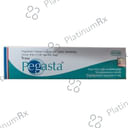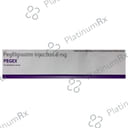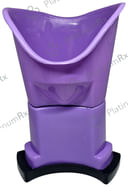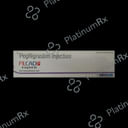Pegfilgrastim
Uses
Pegfilgrastim is used to prevent infections following chemotherapy.
How it Works
How Pegfilgrastim works Pegfilgrastim is a growth factor that stimulates the bone marrow to produce white blood cells. These cells protect the body against infections.
Side Effects
Common side effects of Pegfilgrastim include joint pain, headache, muscle pain, back pain, injection site pain, hair loss, fever, diarrhea, skeletal pain, limb pain, musculoskeletal (bone, muscle, or joint) pain, and neck pain.
Expert Advice
- Pegfilgrastim reduces the risk of infection in individuals undergoing chemotherapy.
- It is typically administered as a daily injection into the tissue just beneath the skin or directly into a vein.
- You will generally receive your first dose at least 24 hours after your chemotherapy or bone marrow transplant.
- Store Pegfilgrastim in the refrigerator, protect it from light, and do not shake it.
- For a more comfortable injection, allow the syringe to reach room temperature by leaving it out for 30 minutes before use.
- Pain or redness at the injection site is common.
- Inform your doctor if you notice a lump, swelling, or bruising that persists.
- Exercise caution while driving or performing tasks that require concentration, as Pegfilgrastim may cause dizziness.
- Your doctor may conduct regular tests to monitor your blood cell counts and bone density levels during treatment with this medication.
- Discontinue Pegfilgrastim and notify your doctor if you experience fever, shortness of breath, rapid breathing, or difficulty breathing.
Other Combinations
Related Medications
Pegfilgrastim 6mg

₹3,550

₹3,006.9
MRP ₹3,905
Pegfilgrastim 6mg

₹600

₹3,006.9
MRP ₹3,905
Pegfilgrastim 6mg

₹6,984.5

₹3,006.9
MRP ₹3,905
Pegfilgrastim 6mg

₹5,240

₹3,006.9
MRP ₹3,905
Pegfilgrastim 6mg

₹5,994

₹3,006.9
MRP ₹3,905
Pegfilgrastim 6mg

₹3,600

₹3,006.9
MRP ₹3,905
Pegfilgrastim 6mg

₹8,125

₹3,006.9
MRP ₹3,905
Pegfilgrastim 6mg

₹9,800

₹3,006.9
MRP ₹3,905
Pegfilgrastim 6mg

₹5,040

₹3,006.9
MRP ₹3,905
Pegfilgrastim 6mg

₹13,990

₹3,006.9
MRP ₹3,905
Pegfilgrastim 6mg

₹7,791

₹3,006.9
MRP ₹3,905
Pegfilgrastim 6mg

₹6,334.1

₹3,006.9
MRP ₹3,905
Pegfilgrastim 6mg

₹6,499

₹3,006.9
MRP ₹3,905
Pegfilgrastim 6mg

₹7,525

₹3,006.9
MRP ₹3,905
Pegfilgrastim 6mg

₹6,400

₹3,006.9
MRP ₹3,905
Pegfilgrastim 6mg

₹4,992.1

₹3,006.9
MRP ₹3,905
Pegfilgrastim 6mg

₹3,420.3

₹3,006.9
MRP ₹3,905
Pegfilgrastim 6mg

₹6,469

₹3,006.9
MRP ₹3,905
Pegfilgrastim 6mg

₹2,919.1

₹3,006.9
MRP ₹3,905
Pegfilgrastim 6mg

₹3,010

₹3,006.9
MRP ₹3,905
Pegfilgrastim 6mg

₹9,700

₹3,006.9
MRP ₹3,905
Pegfilgrastim 6mg

₹5,449.1

₹3,006.9
MRP ₹3,905
Pegfilgrastim 6mg

₹3,006.9
MRP ₹3,905
Pegfilgrastim 6mg

₹33,800

₹3,006.9
MRP ₹3,905
Pegfilgrastim 60mg

₹2,882